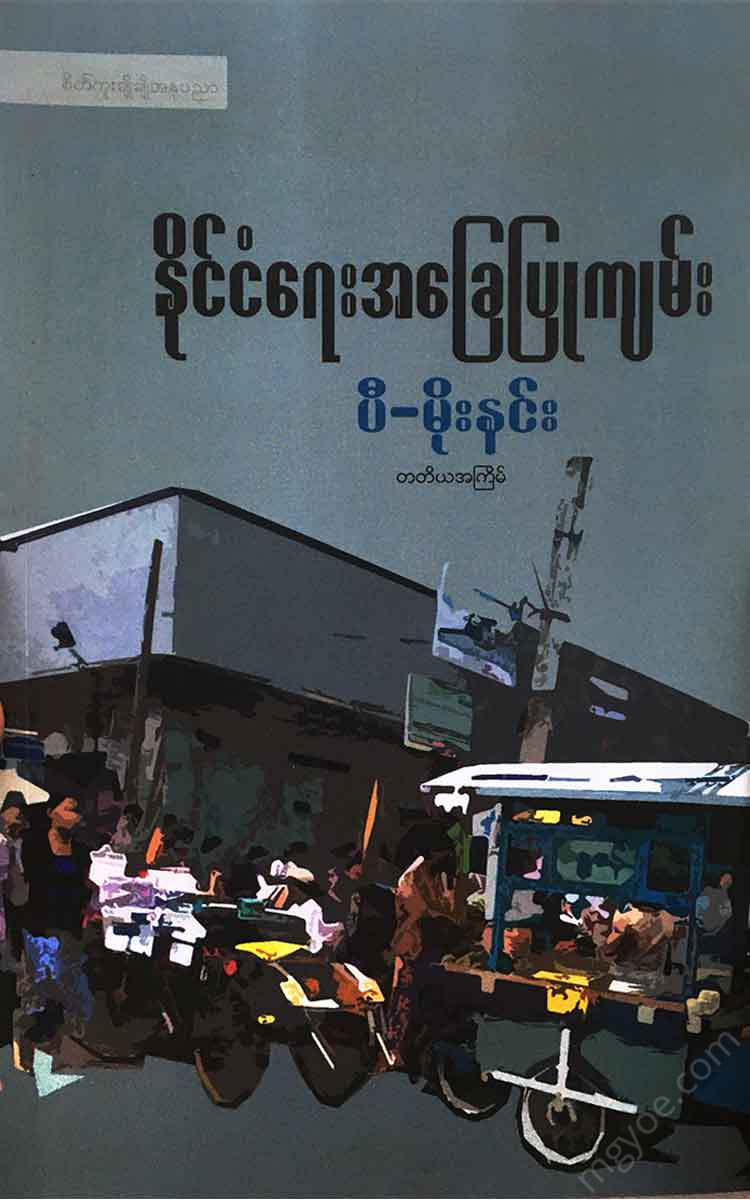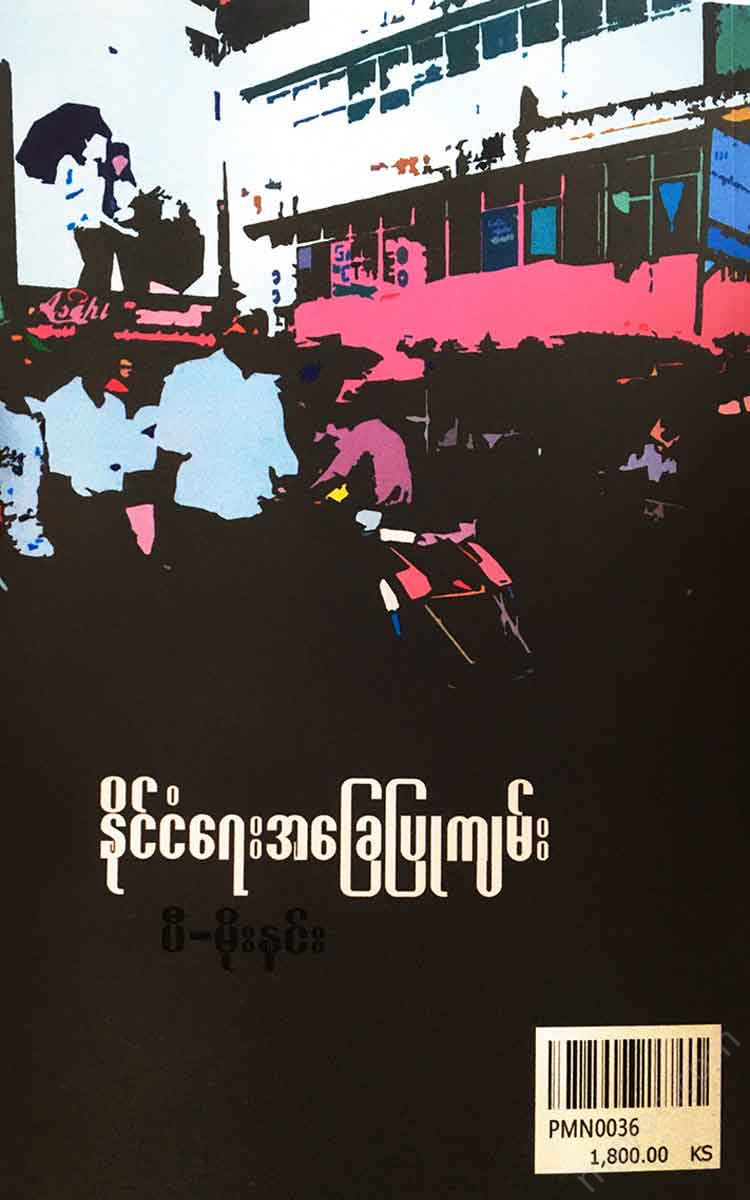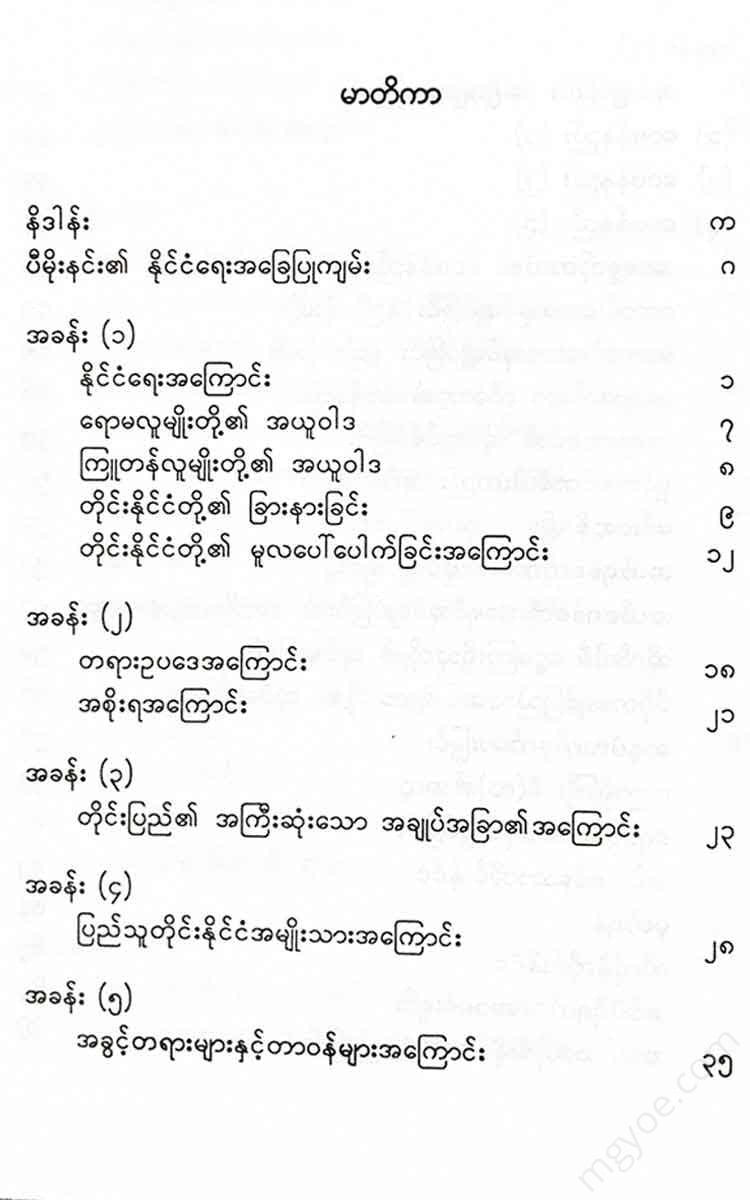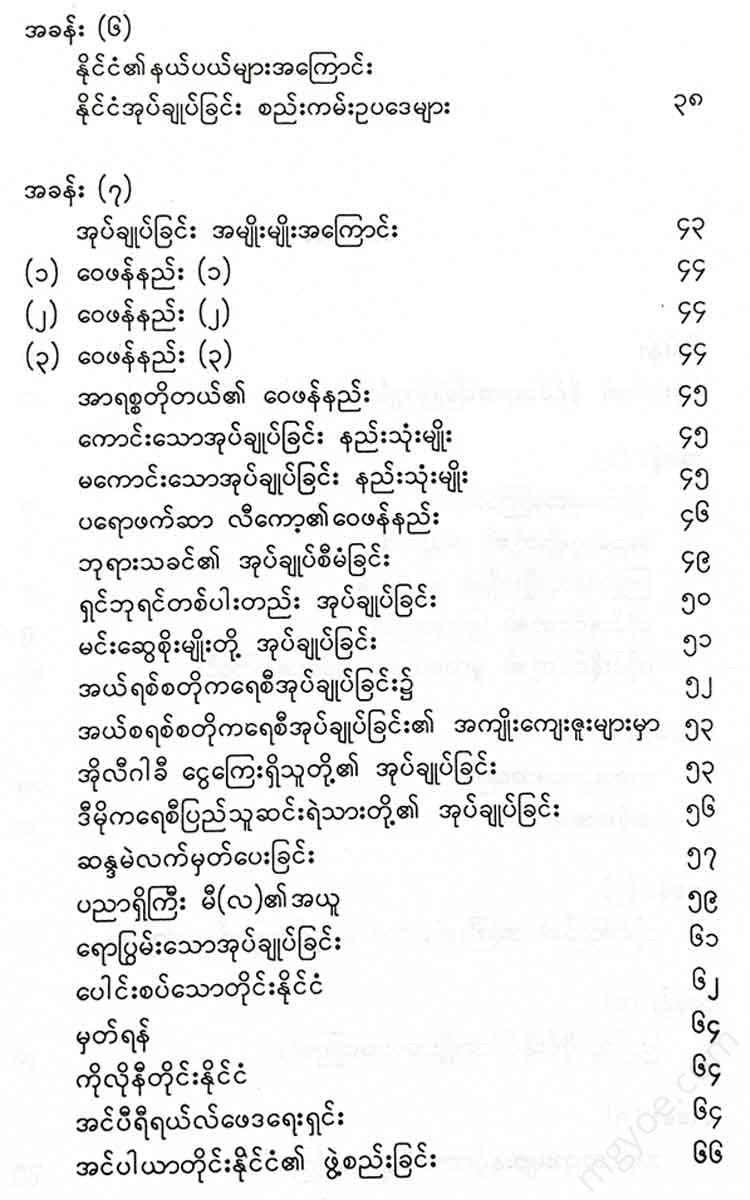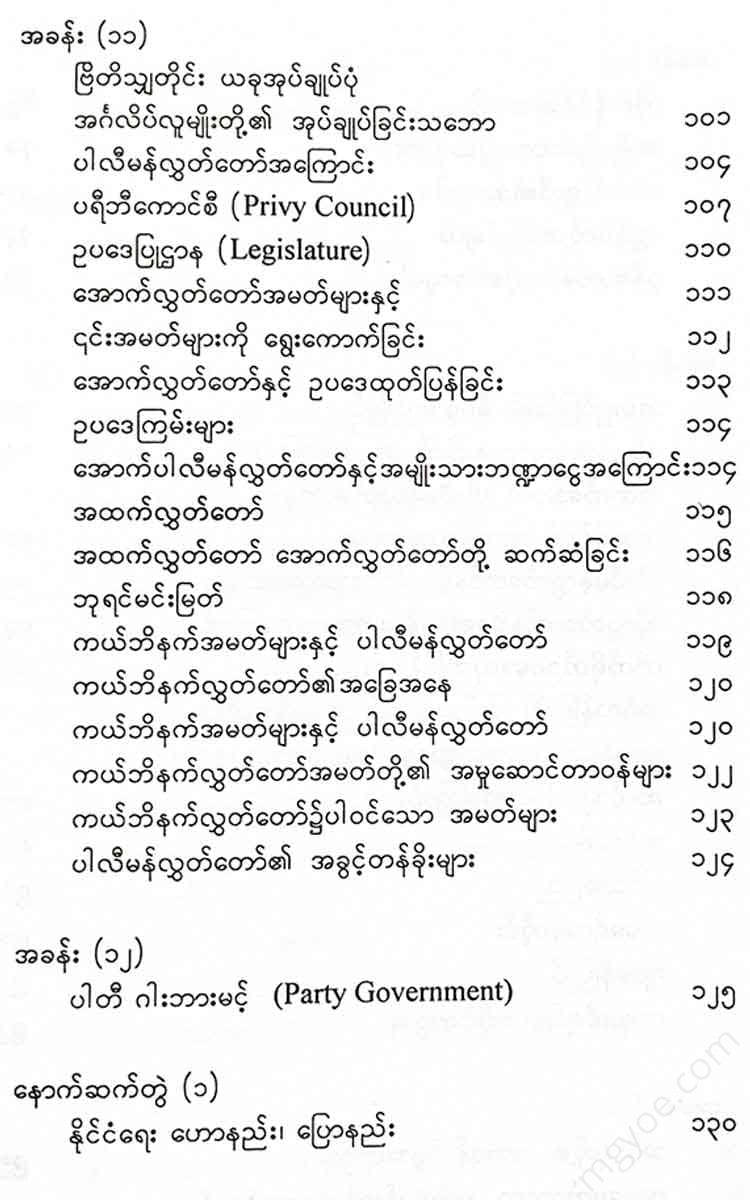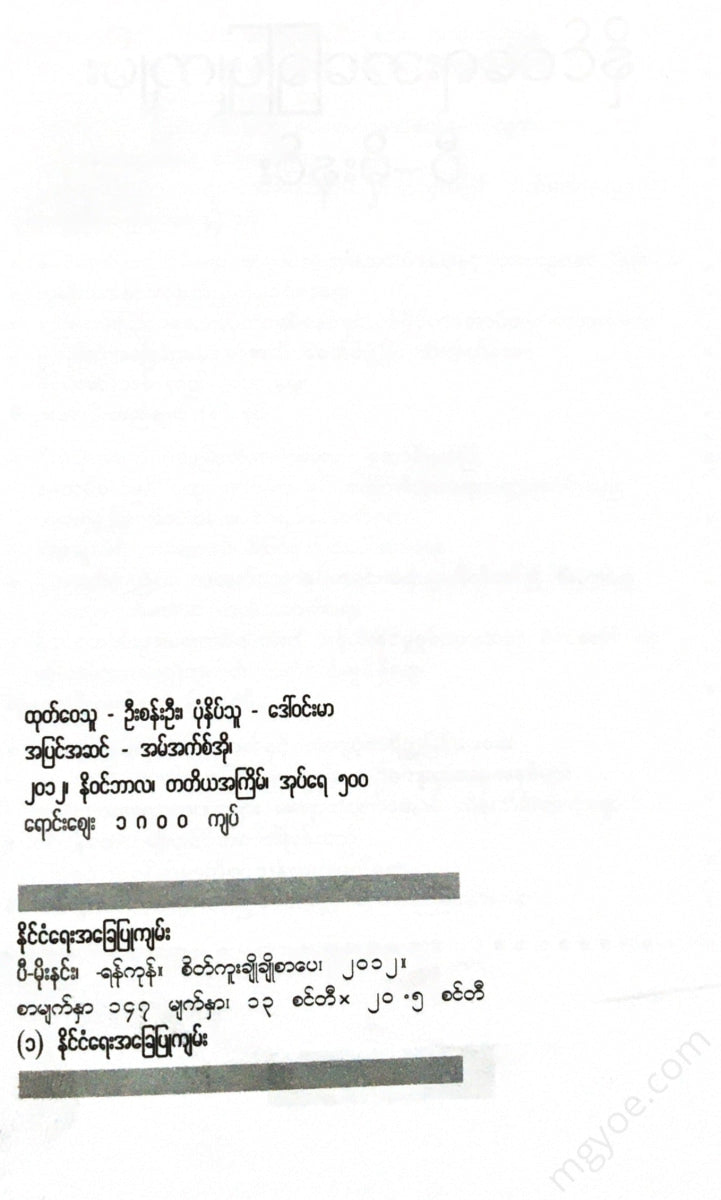စိတ်ကူးချိုချိုစာပေ
P'morning - Politically-based book
P'morning - Politically-based book
Couldn't load pickup availability
P. Morin's Political Basics
In 1954, while the author was studying for an honors degree at Yangon University, one day he bought fried rice from a shopkeeper selling fried rice under a shed in front of the Innwa Hall. The shopkeeper ran out of paper to wrap it, so he pulled out a book to tear out from his old book and found a green cardboard cover and a very old “Political Foundations.” He took the time to tear it out and found that it was a book written by Pi Moe Ning in 1923. He bought the book with a fish hook. He used the empty book that the author had brought to wrap the fried rice. The shopkeeper, who was happy with the fish hook, showed it to the author every time he brought an old book, but he did not like it anymore.
I glanced at the book and put it in the bookcase. It has been (18) years since I received it. Once, I read an article by Sayar Tat Toe in the Workers’ Daily newspaper that called for the study of constitutionalism, and I remembered the book on political principles. I searched through the bookcases and found it only now. The book, written on April 5, 1923, was printed by Bandhutha Printing House, 30, Maung Gomari Road, Yangon. The book states that it is sold by Wan Thanu U Byay 18, Maung Thein Pitaka Set and Robes Shop, No. (96), Shwedagon Pagoda Market, Yangon. The book is (79) years old and has begun to be discussed. Almost 50 years ago, as a favor to Master P. Moe Ning, who wrote with great dedication to help Burmese people understand the study of politics and constitutionalism, I would like to present excerpts from the book, as it is a time when the entire public is focusing on studying the subject of governance.
As Pei Moen describes his dedication in the introduction:
"The books written and compiled by the wise. The author's purpose in compiling this small book from textbooks for BA and MA degrees is none other than to place a good political weapon in the hands of all monks and nuns who wish to serve the interests of the nation, country, and religion in this important political era."
It is.
The book, which is 8.5 inches long and 5.5 inches wide, has 160 pages, 12 chapters, and two appendices. The first chapter explains politics, and provides a simple explanation of the political ideologies of the Romans and the Quartets, and the origins of the nations.
See the excerpt below.
“Political science is the science that indicates the fundamental principles and methods of governance of a country where human beings live together.” “It is connected with history. It is connected with the science of political economy, which is the science of the rules and methods of national development. It is connected with the science of social life, which is called sociology. It is connected with the science of statistics , which is the science of mathematically identifying the events and conditions of a country.”
Patriotism is defined as:
"The united will of all the people is the life of the great entity called the country. That life is not always manifest, but when the country is in danger, that life often comes into clear motion."
It is said.
In describing the origin of nations , he summarizes the ideas of Hobbes, Loeke, Rouaseau, and ovo, and also includes the ideas of Professor Burgess, a political scientist , and Sem? (Leacock).
In writing about law in Chapter (2), -
"Laws are a kind of command that human beings living together must obey, and the highest government officials must insist that they obey them."
It points out the importance of government power for the effectiveness of the law. The way the government is written in a way that makes it understandable to the layman is
"When thinking about a nation, it is clear to the mind that the government is the most important thing. In every nation, there are those who rule and those who are ruled. When there is no government to rule, the existence of the nation ceases and a state of rampant anarchy emerges."
“Government is understood as the institution that gives authority to those who are governed. Its rulers are like the instruments of government, which exercise the greatest powers of the state.” (Page 45)
It is said that government is important in governance, and without government, a country cannot survive.
"Sovereignty , the supreme authority of a country, is explained from the perspective of law, political science, constitution, and history. The people are the sovereign. However, the sovereignty of a country is -
"It does not mean anything in terms of law or politics, but rather the seat of the greatest power. It is the state, the kingdom. Under the infinite power of that kingdom, all the people live."
It is explained separately. Finally, the scholar Bodin 's statement that "sovereign power cannot be divided, cannot be regulated, cannot be transferred" is presented.
Regarding the ethnic groups in the country, P. Morning also provides historical background and draws on examples from many countries. He warns that ethnic cultural traditions should be modified to suit the times:
"Although it is said that customs and traditions are the right of men, if there are any wrong and corrupt practices, the government must eliminate those practices. For example, in India, when the husband dies, the wife must follow him."
The rights and responsibilities that every citizen must understand and follow are presented by P.M.:
“People are given the right to own and use certain things for the common good. What is given is called a right. If there is a right, there are also responsibilities for such rights. If they only want rights and do not want to accept responsibilities, they cannot be useful people.”
The term "Constitutional Law" is defined as follows.
“In the governance of a country , there is a constitution called the constitution. There is also a constitutional law called the constitution. This law describes the differences between the legislative, judicial, and executive branches, and clearly describes the methods of operation of each branch.
Then, the types of government that are easy to amend, the types that are difficult to amend (Unitary Government ) , Federal Government, government by one person, government by a group of people, and government by the majority are explained with examples from ancient and modern times.
